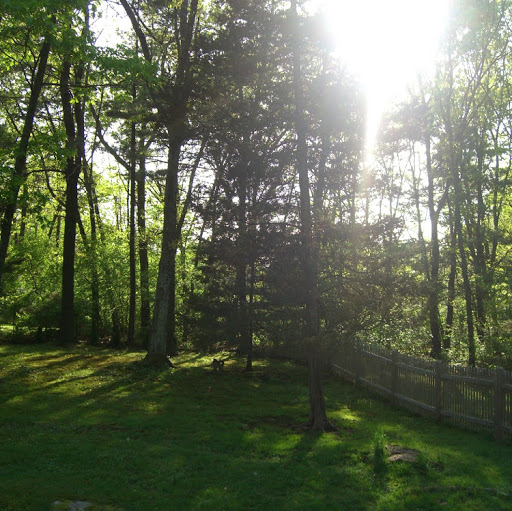Jeffrey George Andrews
age ~51
from Austin, TX
- Also known as:
-
- Jeffrey G Andrews
- Jeff Andrews
- Phone and address:
- 1900 S 2Nd St, Austin, TX 78704
Jeffrey Andrews Phones & Addresses
- 1900 S 2Nd St, Austin, TX 78704
- Stanford, CA
- 473 Guerrero St, San Francisco, CA 94110
- Monterey Park, CA
- Del Mar, CA
- Menlo Park, CA
- Granite Bay, CA
- Tucson, AZ
Lawyers & Attorneys

Jeffrey Andrews - Lawyer
view sourceOffice:
Richards & Richards
Specialties:
Real Estate
Corporate Commercial Law
Wills
Estate Planning
Construction Law
Corporate Commercial Law
Wills
Estate Planning
Construction Law
ISLN:
909422156
Admitted:
1990
University:
University of British Columbia, 1984
Law School:
University of British Columbia, LL.B., 1989

Jeffrey Andrews - Lawyer
view sourceOffice:
The Vernon Law Firm, P.A.
Specialties:
Elder Law
Health Care
Employment Law
Trust & Estates
Intellectual Property
Commercial & Business Law
Health Care
Employment Law
Trust & Estates
Intellectual Property
Commercial & Business Law
ISLN:
909422163
Admitted:
1976
University:
University of Virginia, B.S.C.E., 1972
Law School:
University of Virginia's School of Law, J.D., 1976
Us Patents
-
Systems And Methods For Rendering Visual Effects That Are A Function Of Depth
view source -
US Patent:6686915, Feb 3, 2004
-
Filed:Apr 19, 2001
-
Appl. No.:09/838624
-
Inventors:Jeffrey A. Andrews - Sunnyvale CA
-
Assignee:Webtv Networks, Inc. - Mountain View CA
-
International Classification:G06T 1540
-
US Classification:345422, 345426
-
Abstract:Systems and methods for accurately and realistically rendering a visual effect such as fog, colored liquids, gels, smoke, mists, and the like for which the visual appearance of the effect can change with respect to depth and for which the effect is rendered on a output display so as to be generally contained. Depth values are identified and passed to a visibility function in order to yield corresponding visibility values. An adjusted visibility function blends the obtained visibility values and yields an adjusted visibility value. This process for obtaining an adjusted visibility value is performed for every pixel of a display screen that is used to render the visual effect in order to accurately render the visual effect as it would be perceived in the real world.
-
Applying Multiple Texture Maps To Objects In Three-Dimensional Imaging Processes
view source -
US Patent:6741259, May 25, 2004
-
Filed:Aug 24, 2001
-
Appl. No.:09/939130
-
Inventors:Nicholas R. Baker - Cupertino CA
Jeffrey A. Andrews - Sunnyvale CA
Mei-Chi M. Liu - Santa Clara CA -
Assignee:WebTV Networks, Inc. - Mountain View CA
-
International Classification:G09G 500
-
US Classification:345582, 345583, 345584, 345545, 345552
-
Abstract:Systems and methods for providing multi-pass rendering of three-dimensional objects. A rendering pipeline is used that includes one or more (N) physical texture units and one or more associated frame buffers to emulate a rendering pipeline containing more texture units (M) than are actually physically present (N). Multiple rendering passes are performed for each pixel of a frame. During each texture pass for each pixel of a frame, only N sets of texture coordinates are passed to the texture units. The number of passes required through the pipeline to emulate M texture units is M/N, rounded up to the next integer number of passes. The N texture units of the rendering pipeline perform the look-ups on a given pass for the correspondingly bound N texture maps. The texture values obtained during the texture passes for each pixel are blended by complementary texture blenders to provide composite texture values for each of the pixels of the frame. In successive passes, the frame buffers are used to support any necessary extra temporary data and to store the most current composite texture values for all of the pixels of the frame.
-
System And Method For Parallel Execution Of Data Generation Tasks
view source -
US Patent:6862027, Mar 1, 2005
-
Filed:Jun 30, 2003
-
Appl. No.:10/611415
-
Inventors:Jeffrey A. Andrews - Sunnyvale CA, US
Nicholas R. Baker - Cupertino CA, US
J. Andrew Goossen - Issaquah WA, US
Michael Abrash - Kirkland WA, US -
Assignee:Microsoft Corp. - Redmond WA
-
International Classification:G06F015/80
-
US Classification:345505, 345557, 345419, 711122, 382233
-
Abstract:A CPU module includes a host element configured to perform a high-level host-related task, and one or more data-generating processing elements configured to perform a data-generating task associated with the high-level host-related task. Each data-generating processing element includes logic configured to receive input data, and logic configured to process the input data to produce output data. The amount of output data is greater than an amount of input data, and the ratio of the amount of input data to the amount of output data defines a decompression ratio. In one implementation, the high-level host-related task performed by the host element pertains to a high-level graphics processing task, and the data-generating task pertains to the generation of geometry data (such as triangle vertices) for use within the high-level graphics processing task. The CPU module can transfer the output data to a GPU module via at least one locked set of a cache memory. The GPU retrieves the output data from the locked set, and periodically forwards a tail pointer to a cacheable location within the data-generating elements that informs the data-generating elements of its progress in retrieving the output data.
-
Applying Multiple Texture Maps To Objects In Three-Dimensional Imaging Processes
view source -
US Patent:6975327, Dec 13, 2005
-
Filed:Feb 2, 2004
-
Appl. No.:10/770054
-
Inventors:Nicholas R. Baker - Cupertino CA, US
Jeffrey A. Andrews - Sunnyvale CA, US
Mei-Chi M. Liu - Santa Clara CA, US -
Assignee:Microsoft Corporation - Redmond WA
-
International Classification:G09G005/00
-
US Classification:345582, 345583, 345584, 345545, 345552
-
Abstract:Systems and methods for providing multi-pass rendering of three-dimensional objects. A rendering pipeline that includes (N) physical texture units and one or more associated buffers emulates a rendering pipeline containing more texture units (M) than are physically present (N). Multiple rendering passes are performed for each pixel. During each texture pass only N sets of texture coordinates are passed to the texture units. The number of passes required through the pipeline to emulate M texture units is M/N, rounded up to the next integer. The N texture units of the rendering pipeline perform look-ups on a given pass for the corresponding N texture maps. The texture values obtained during the texture passes are blended by texture blenders to provide composite texture values. In successive passes, the buffers are used for temporary data and the most current composite texture values. The process is repeated until all desired texture maps are applied.
-
Methods And Systems For Transparent Depth Sorting
view source -
US Patent:7030887, Apr 18, 2006
-
Filed:Nov 12, 2003
-
Appl. No.:10/706690
-
Inventors:Jeffrey A. Andrews - Sunnyvale CA, US
-
Assignee:Microsoft Corporation - Redmond WA
-
International Classification:G09G 5/339
G09G 5/02
G06T 17/20
G06T 15/50 -
US Classification:345592, 345422, 345426, 345539, 345561
-
Abstract:Methods and systems for transparent depth sorting are described. In accordance with one embodiment, multiple depth buffers are utilized to sort depth data associated with multiple transparent pixels that overlie one another. The sorting of the depth data enables identification of an individual transparent pixel that lies closest to an associated opaque pixel. With the closest individual transparent pixel being identified, the transparency effect of the identified pixel relative to the associated opaque pixel is computed. If additional overlying transparent pixels remain, a next closest transparent pixel relative to the opaque pixel is identified and for the next closest pixel, the transparency effect is computed relative to the transparency effect that was just computed.
-
Applying Multiple Texture Maps To Objects In Three-Dimensional Imaging Processes
view source -
US Patent:7095419, Aug 22, 2006
-
Filed:Aug 31, 2005
-
Appl. No.:11/216251
-
Inventors:Nicholas R. Baker - Cupertino CA, US
Jeffrey A. Andrews - Sunnyvale CA, US
Mei-Chi M. Liu - Santa Clara CA, US -
Assignee:Microsoft Corporation - Redmond WA
-
International Classification:G09G 5/00
-
US Classification:345582, 345583, 345584, 345545, 345552
-
Abstract:Systems and methods for providing multi-pass rendering of three-dimensional objects. A rendering pipeline that includes (N) physical texture units and one or more associated buffers emulates a rendering pipeline containing more texture units (M) than are physically present (N). Multiple rendering passes are performed for each pixel. During each texture pass only N sets of texture coordinates are passed to the texture units. The number of passes required through the pipeline to emulate M texture units is M/N, rounded up to the next integer. The N texture units of the rendering pipeline perform look-ups on a given pass for the corresponding N texture maps. The texture values obtained during the texture passes are blended by texture blenders to provide composite texture values. In successive passes, the buffers are used for temporary data and the most current composite texture values. The process is repeated until all desired texture maps are applied.
-
Transparent Depth Sorting
view source -
US Patent:7116337, Oct 3, 2006
-
Filed:Feb 1, 2006
-
Appl. No.:11/275878
-
Inventors:Jeffrey A. Andrews - Sunnyvale CA, US
-
Assignee:Microsoft Corporation - Redmond WA
-
International Classification:G09G 5/02
G06T 15/20
G06T 17/20
G09G 5/339 -
US Classification:345592, 345422, 345426, 345539, 345561
-
Abstract:Methods and systems for transparent depth sorting are described. In accordance with one embodiment, multiple depth buffers are utilized to sort depth data associated with multiple transparent pixels that overlie one another. The sorting of the depth data enables identification of an individual transparent pixel that lies closest to an associated opaque pixel. With the closest individual transparent pixel being identified, the transparency effect of the identified pixel relative to the associated opaque pixel is computed. If additional overlying transparent pixels remain, a next closest transparent pixel relative to the opaque pixel is identified and, for the next closest pixel, the transparency effect is computed relative to the transparency effect that was just computed.
-
System And Method For Parallel Execution Of Data Generation Tasks
view source -
US Patent:7333114, Feb 19, 2008
-
Filed:Dec 30, 2004
-
Appl. No.:11/027454
-
Inventors:Jeffrey A. Andrews - Sunnyvale CA, US
Nicholas R. Baker - Cupertino CA, US
J. Andrew Goossen - Issaquah WA, US
Michael Abrash - Kirkland WA, US -
Assignee:Microsoft Corporation - Redmond WA
-
International Classification:G06F 15/16
G06F 12/00
G09G 5/36 -
US Classification:345503, 345557, 711118
-
Abstract:A CPU module includes a host element configured to perform a high-level host-related task, and one or more data-generating processing elements configured to perform a data-generating task associated with the high-level host-related task. Each data-generating processing element includes logic configured to receive input data, and logic configured to process the input data to produce output data. The amount of output data is greater than an amount of input data, and the ratio of the amount of input data to the amount of output data defines a decompression ratio. In one implementation, the high-level host-related task performed by the host element pertains to a high-level graphics processing task, and the data-generating task pertains to the generation of geometry data (such as triangle vertices) for use within the high-level graphics processing task. The CPU module can transfer the output data to a GPU module via at least one locked set of a cache memory. The GPU retrieves the output data from the locked set, and periodically forwards a tail pointer to a cacheable location within the data-generating elements that informs the data-generating elements of its progress in retrieving the output data.
Isbn (Books And Publications)

Fundamentals of WiMAX: Understanding Broadband Wireless Networking
view sourceAuthor
Jeffrey Andrews
ISBN #
0132225522
License Records
Jeffrey J Andrews
License #:
3147502 - Expired
Category:
Health Care
Issued Date:
Mar 7, 1997
Effective Date:
Aug 28, 2002
Expiration Date:
Jul 31, 2000
Type:
Registered Nurse
Name / Title
Company / Classification
Phones & Addresses
Owner
Outlaw Affliction
Professional Services (General)
Professional Services (General)
3131 Mountain Creek Road, Apt. 7C4, Chattanooga, TN 37415
Managing
Mr. Sparkle Cleaning Services, LLC
Manager
ANDREWS BROADBAND COMMUNICATIONS, LLC
1900 S 2 St, Austin, TX 78704
702 Upson St, Austin, TX 78703
702 Upson St, Austin, TX 78703
J AND A REMODELING INC
JEFF'S AUTO WHOLESALE, LLC
STAGE 1 AUDIO LLC
Director
NXN WIRELESS, INC
702 Upson St, Austin, TX 78703

Jeffrey Andrews
view source
Jeffrey Andrews Sr.
view source
Kristin Jeffrey Andrews
view source
Jeffrey A. Andrews
view source
Jeffrey ImAtheist Andrews
view source
Jeffrey Dwight Andrews
view source
Jeffrey Andrews
view source
Vance Jeffrey Andrews
view sourceClassmates

Jeffrey Andrews
view sourceSchools:
Crosby-Ironton High School Crosby MN 1967-1978, Laurel High School Laurel MT 1976-1980
Community:
Daniel Amsden, Donna Bonar, Jack Darsnek

Jeffrey Andrews
view sourceSchools:
Heritage High School Vancouver WA 2001-2005
Community:
Carrie Cook, Katherine Livick

Jeffrey Andrews
view sourceSchools:
American School London CT 1998-1999

Jeffrey Andrews
view sourceSchools:
Fork Union Military Academy Fork Union VA 1979-1983
Community:
Don Jessup, Steve Kamp, Joyce Reeves

Jeffrey Andrews (Andrwws)
view sourceSchools:
Bluestone High School Skipwith VA 1993-1997
Community:
Carolyn Harris

Jeffrey Andrews
view sourceSchools:
Richland Junior High School Richland Hills TX 1968-1970
Community:
Gwen Sellers, David Thompson, Bob Barker, Vance Jackman

Jeffrey Andrews
view sourceSchools:
Academy of Health Professions Tampa FL 1992-1996
Community:
Shelly Spratt, Andrea Killian, Tara Graves

Jeffrey Andrews
view sourceSchools:
Oneonta High School Oneonta NY 1987-1991
Community:
Kathy More, John Gallagher
Flickr
Googleplus

Jeffrey Andrews
Lived:
Austin, TX

Jeffrey Andrews

Jeffrey Andrews

Jeffrey Andrews

Jeffrey Andrews

Jeffrey Andrews

Jeffrey Andrews

Jeffrey Andrews
News

China Exerts a Heavier Hand in Hong Kong With Mass Arrests
view source- Jeffrey Andrews, a social worker of Indian descent who was born and raised in Hong Kong, was known more for his work helping members of ethnic minority groups than for fiery slogans. Mr. Andrews ran in the primary and finished last in his race.
- Date: Jan 06, 2021
- Category: Headlines
- Source: Google

Death and Medicine: Why Lethal Injection Is Getting Harder
view source- "Patients should never confuse the death chamber with the operating room, lethal doses of execution drugs with anesthetic drugs, or the executioner with the anesthesiologist," J. Jeffrey Andrews, the secretary of the ABA, wrote in a commentary in May 2014. "Physicians should not be expected t
- Date: Jun 30, 2015
- Category: U.S.
- Source: Google

'Strikingly Geometric' Shapes Hidden on Moon's Surface
view source- "GRAIL has revealed features on the moon that no one anticipated before we had this data in hand," said lead study author Jeffrey Andrews-Hanna, a planetary scientist at the Colorado School of Mines in Golden. "One can only wonder what might lie hidden beneath the surfaces of all of the other
- Date: Oct 01, 2014
- Category: Sci/Tech
- Source: Google

Ancient magma plumbing found buried below moon's largest dark spot
view source- Were realizing that the early moon was a much more dynamic place than we thought, says Jeffrey Andrews-Hanna, a planetary scientist at the Colorado School of Mines in Golden and lead author of a new study of the Procellarums geology. The discovery also casts doubt on the decades-old theory that
- Date: Oct 01, 2014
- Category: Sci/Tech
- Source: Google

Bizarre moon structures: How did they get there?
view source- Everything that has mass exerts some degree of gravitational pull on the objects around it, explains study lead author Jeffrey Andrews-Hannah, who runs the Planetary Geophysics Lab at Colorado School of Mines in Golden, Colo. On an object as large as our moon, variations in density and topography ca
- Date: Oct 01, 2014
- Source: Google

All Cracked Up: A Surprising Look Inside the Moon
view source- of underground gravity variation GRAIL saw was in large part due to a network of enormous subsurface cracks up to 300 miles (483 km) long and up to 25 miles (40 km) wide. Theyre amazingly straight, says Jeffrey Andrews-Hanna of the Colorado School of Mines, lead author of the second paper. Weve
- Date: Dec 06, 2012
- Source: Google

Twin Gravity-Mapping Probes Peer Into the Moon's Secrets
view source- As the interior expands, the crust fractures, and that allows magma to well up into those cracks, said planetary geophysicist Jeffrey Andrews-Hanna of the Colorado School of Mines. Thats actually the opposite of whats been happening for most of the lunar history. For the past 3.5 billion years,
- Date: Dec 05, 2012
- Category: Sci/Tech
- Source: Google
Youtube
Plaxo

Jeffrey Andrews
view sourceDouglasville, GA, United States

JEFFREY ANDREWS
view sourceGet Report for Jeffrey George Andrews from Austin, TX, age ~51












![Kirk Green and Crystal Rose Band [It's Time] Kirk Green and Crystal Rose Band [It's Time]](https://i.ytimg.com/vi/Ri-fcuMzdYs/0.jpg)
